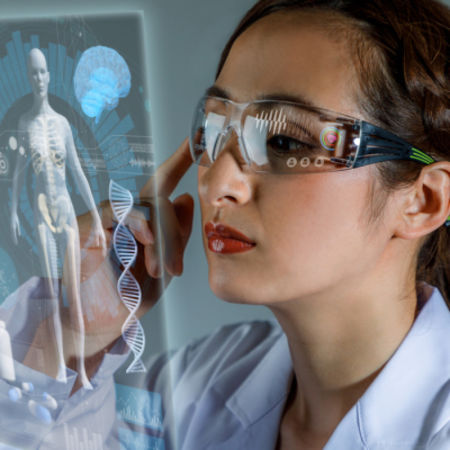Leveraging technology, particularly simulation and virtual reality (VR), is an effective way to prepare medical students for the future of radiology, according to experts in this field of medicine.
Residency largely consists of memorising for exams but incorporating technology in radiology residency training programmes will mean less of a need to remember, students "can just Google it,” says Harprit Bedi, MD, a neuroradiologist and associate professor of radiology at the Boston University School of Medicine. “How does that focus on recall help radiologists take better care of patients? I’m not sure that it does.”
You might also like:Healthcare and Industry Partner for Tech Innovation
To achieve excellence in radiology, Dr. Bedi says trainees must be able to perceive the abnormality and interpret what they see. Such ability, however, must come with critical thinking – "or the confidence to analyse and synthesise everything" the students know to be able to formulate an evidence-based management plan,” he explains.
And simulation has been shown to be useful in teaching critical thinking and prepare residents to be independent readers. Since simulation puts a learner in a situation they are not familiar with and helps them handle near real-world situations, this technique is "a very effective method" for testing preparedness and building confidence without risking patient care, according to Lonie Salkowski, MD, a professor of radiology at the University of Wisconsin – Madison School of Medicine and Public Health.
While teaching radiology and anatomy classes, Dr. Salkowski observed that students tended to understand anatomy in dissection that’s why when presented with medical images, they struggled to put the two together. To address this problem, Dr. Salkowski conducted a research project to develop instructional clinical scenarios. She created an integrated imaging and 3D simulation device that combines the physical resemblance of a body with abdominal CT scans.
Upon viewing the anatomical CT slices, students were asked to localise the position of anatomy seen on the CT images on the physical surface of the body. This exercise highlighted the struggle many students experience when transferring knowledge from one domain to another, Dr. Salkowski noted, adding this is a critical thinking skill that simulation is well-positioned to help with.
Luckily, simulation can be enhanced using virtual reality (VR) and augmented reality (AR), according to Raul Uppot, MD, an assistant professor of radiology at Harvard Medical School, Boston. “With technology like virtual reality, we can build a student’s confidence and move toward mastery by providing a ‘hands-on’ experience without involving a patient.”
VR systems are well suited for teaching because they involve total immersion. In his classroom, Dr. Uppot has his students wear VR headsets that instantly immerse them in the IR room, where they can look around and see not only the procedure but also the equipment, the nurse, the technologist – everything and everyone.
However, given the financial burden of using high-end, commercially available VR headsets for every student, Dr. Uppot and colleagues developed an app for bringing this immersive experience into the classroom. Students can simply download the app onto their smartphones to access a prerecorded video of the interventional radiology room. They then clip a plastic stereoscopic device directly to their smartphone, which creates a stereoscopic view.
Innovations like this represent the future of radiology education, says Dr. Uppot, also an interventional radiologist at Massachusetts General Hospital. “With the right technology, we can move beyond rote learning and achieve meaningful learning, which is an essential building block of critical thinking,” he adds.
Source: RSNA
Image Credit: iStock
Latest Articles
Imaging, Radiology, education, Simulation, augmented reality, virtual reality, Critical Thinking, VR, radiology education, residency training, AR, The Future of Radiology, residency training programmes, Harprit Bedi, Boston University School of Medicine, Lonie Salkowski, University of Wisconsin – Madison School of Medicine and Public Health
Leveraging technology, particularly simulation and virtual reality (VR), is an effective way to prepare medical students for the future of radiology, according to experts in this field of medicine.



























